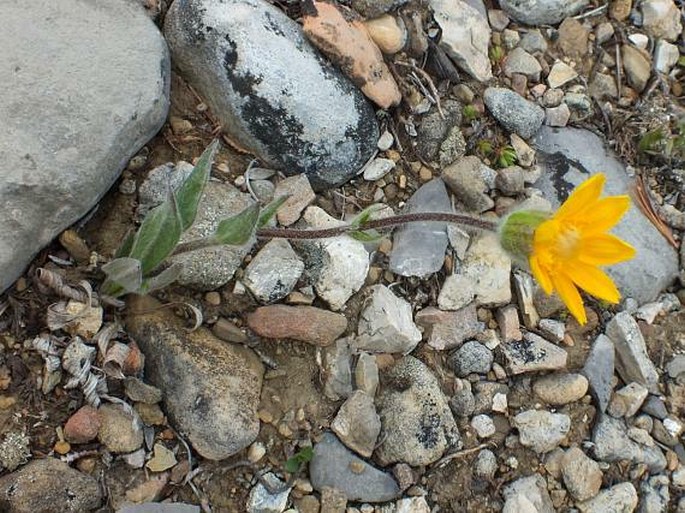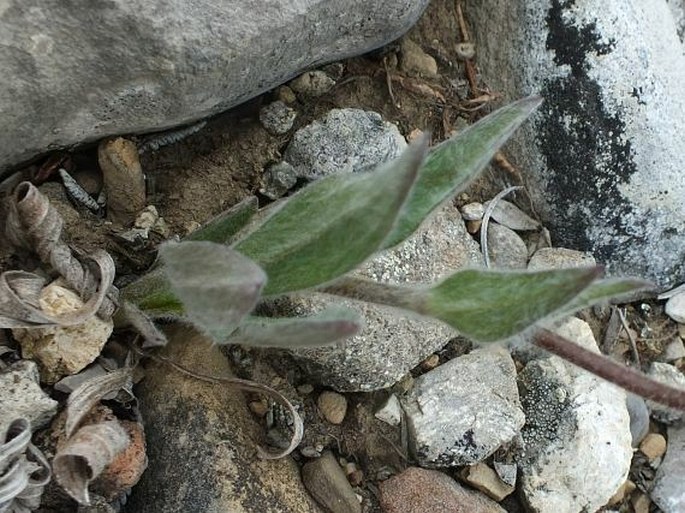Syn.: Arnica alpina subsp. tomentosa (J. M. Macoun) Maguire, Arnica alpina var. tomentosa (J. M. Macoun) Cronquist, Arnica angustifolia var. tomentosa (J. M. Macoun) Dorn, Arnica tomentosa J. M. Macoun
Family: Asteraceae Bercht et J. Presl

Distribution: Subspecies of the west of North America – from Yukon, through British Columbia and Alberta, to Montana, Wyoming and Colorado.
Ecology: Alpine slopes and subalpine meadows, rocky slopes at elevations 500–2500 m. Blooms from June to August.

Description: Perennial herb, 5–20(–40) cm tall, conspicuously woolly-pubescent throughout. Stems usually simple, rarely branched. Leaves 1–5 pairs, mostly cauline, narrowly lanceolate, densely white-woolly-villous; stem leaves sessile, opposite, smaller than the basal leaves. Flower heads 1–3(–5); involucre hemispheric, 10–14 mm long, densely woolly-villous and densely stipitate-glandular, phyllaries 9–22, lanceolate or oblanceolate; ray florets 6–16, yellow; disc florets yellow, anthers yellow. Fruit is an achene, 3–8 mm long, hairy, with finely barbed white pappus.
Note: The nominate subspecies Arnica angustifolia subsp. angustifolia occurs in the Arctic regions of North America, Europe and Asia, the leaves are linear to broadly lanceolate, faces glabrous or only moderately villous.



These images were taken in Canada, Alberta, Highwood Grass Pass (June 8, 2016).


